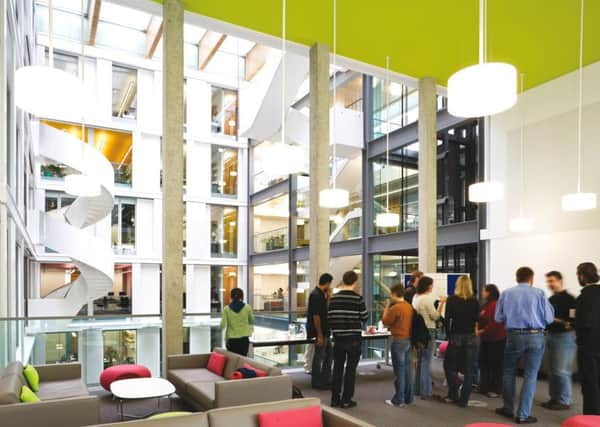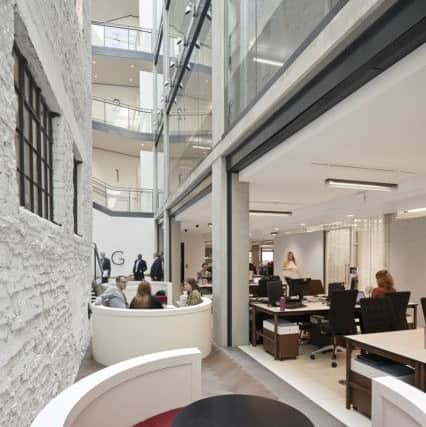Design wellbeing into the workspace


Rarely do they focus on the most important item of all – the workspace – despite it being the reason for its existence.
Is this because the office floors are so featureless?
Is it because they are often so similar to each other?


As an architect, I find it surprising that the workspace has been so neglected by many famous designers, as if the sculptural form of the building was the only thing that mattered.
But things are changing fast.
Advertisement
Hide AdAlthough sporadic research data has been around for more than two decades, a penny has dropped with many office managers that the design of the workspace affects their employees far more than they had previously realised.
To those actually sitting at their desks it may sound like a statement of the obvious, but things like natural light, air quality, acoustics, opening windows, comfortable temperatures, a view and visual stimulus are not only “nice-to-haves” but also affect productivity and the bottom line.


It goes without saying that office workers who feel good are happier too and, while actual increases in productivity are hard to measure, things like absenteeism, employee retention and better recruitment are not.
As staff are by far the largest outgoing for most office-based businesses, even a small percentage improvement in output far outweighs the cost of a property or, more specifically, the cost difference between a good building and a bad one.
Wellbeing, or wellness as it is now being called, has other benefits that may be less obvious.
My own practice’s work over 25 years has shown that the characteristics of a better workspace are closely aligned to those of sustainability, not just the social and economic aspects but for environmental reasons too.
Advertisement
Hide AdGood daylight keeps the lights off; windows that open help to avoid air conditioning; buildings where desks can be close to the perimeter have better views and so on.
Designing for the local climate is also a factor, as an office in Edinburgh or Glasgow will have a markedly different energy profile to one in London or farther afield. In purely architectural terms, designing for wellbeing is having a big impact on those architects who are taking on the lessons.
Global uniformity is at last being questioned.
Advertisement
Hide AdThe all-glass office building that suffers from glare and overheating is a thing of the past (or should be) and interiors where the structure is exposed will have more stable temperatures. All this is producing greater visual interest and variety of work settings than ever before.
For those in the market for new office premises, take the marketing images with a pinch of salt.
Look at the office floors and ask if they have all the elements that would make it a nice place to work.
Rab Bennetts is a director of
Bennetts Associates